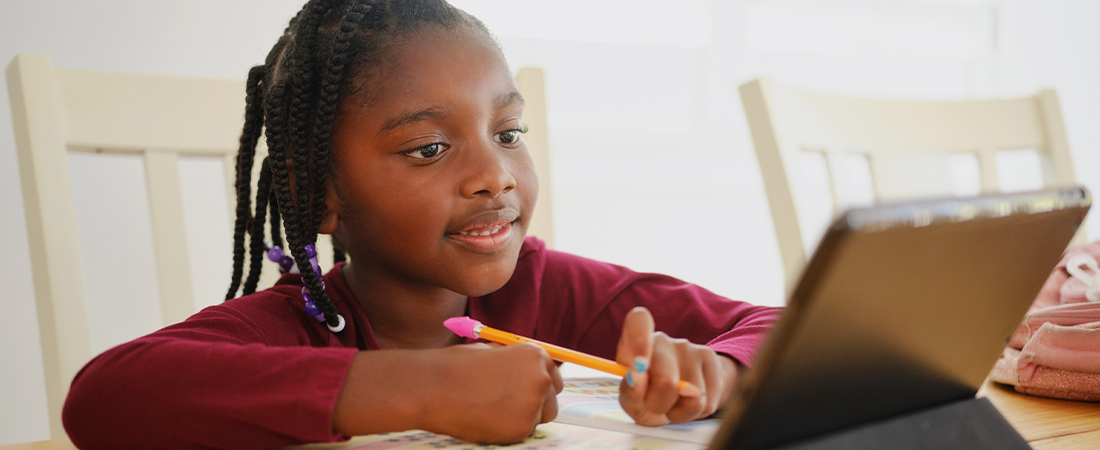3 Ways to Make Online Learning More Equitable

More information about supporting all students during remote learning:
- Accessible Mathematics Experiences for Remote Learning
- 5 Tips for Keeping Your Kids Engaged during Coronavirus
- 7 Tips for Teaching Online
Across the United States, a new wave of coronavirus infections are closing schools again. Boston Public Schools pivoted back to all-remote learning in late October. Metro Detroit schools are all-remote again, and schools in New York City’s coronavirus red zone are shut. The situation is similar in rural communities, as school districts in in Michigan, Wisconsin, and Kansas have also transitioned to remote learning.
This “back to school, then back home” trend is likely to continue until a vaccine becomes widely available. But what can we do to make sure that online education—whether fully remote or part of a hybrid model—is equitable for all students?
Disparities in access to technology are well-documented and are causing learning loss for students in both urban and rural areas. Although districts are distributing laptops and Wi-Fi hotspots to families in need, many students face multiple obstacles when they have to learn at home. A study from McKinsey estimates that low-quality remote instruction extending until January 2021 could “exacerbate existing achievement gaps by 15 to 20 percent.”
However, hybrid and remote education doesn’t have to be unequal. Here are three ideas that can help districts keep at-risk students’ needs front and center.
1. Address the Opportunity Gap
Districts cannot expect that online learning experiences will be the same for all learners. As schools close and reopen, Jackie Zweig, an educational researcher and deputy director of REL Northeast & Islands at EDC, recommends that district leaders prioritize supporting students who will have the most difficulty transitioning in and out of a remote learning environment.
“Schools must have effective ways to meet the needs of multilingual learners, students with disabilities, and students who do not have access to the Internet when they shift back to all-remote learning,” Zweig says.
In practice, this may mean that teachers provide more synchronous, small-group instruction to students who are struggling in a particular subject. Teachers also may want to make recordings of content lessons available for students to re-watch—a technique that benefits all students, not just multilingual learners.
Zweig notes that REL Northeast & Islands recently published 14 briefs with guidance for school districts and educators about how to respond to COVID-19. She also encourages districts to partner with educational researchers to better understand how these opportunity gaps are changing during periods of extended school closures.
“We’re living in a large-scale experiment,” says Zweig. “All of these experiences can help the field learn how to do online and hybrid learning more equitably.”
2. Individualize Instruction
Nevin Katz, an edtech designer at EDC, is concerned about the impact that frequent transitions to all-remote learning could have on students with disabilities, specifically students with individualized education plans (IEPs). IEPs provide teachers with a plan for supporting an individual student’s success—yet they are often written with the in-person learning environment in mind.
“It can be really hard for kids who have challenges in school—such as executive functioning issues or who struggle to initiate and stick with tasks—to do online learning,” says Katz. “How do you keep these students motivated, connected, and successful?”
Katz recommends that teachers arrange regular, one-on-one conversations with students with IEPs to support them during periods of online learning. Teachers may use these sessions to discuss content that has been covered during class sessions, or simply to help the student make sense of how to do assignments in the virtual environment. He notes that it’s also important for the teachers and families of students with disabilities to keep in touch during school closures.
“Families can help teachers understand what parts of remote learning are and are not working for their children and guide needed changes to IEPs,” Katz says.
3. Think beyond the Zoom Call
For many students, more virtual class time does not necessarily translate into a better learning experience. EDC’s Pam Buffington, who has written about rural schools’ responses to COVID-19, says that it is important for teachers to provide students with multiple, engaging ways to access content.
“Maybe a long virtual session is not the best way to get a lot of information out,” Buffington says.
If possible, Buffington recommends that teachers spread out virtual meeting times or use virtual breakout rooms to promote connectedness and smaller discussions. Teachers can then provide different types of learning experiences for students in between classes, including offline reading assignments, interactive activities related to the lesson, and conversations via asynchronous discussion boards.
Thinking beyond the virtual classroom is especially important for students who have limited or no access to the Internet. In rural Maine, for example, Buffington says that many districts routinely print out articles and materials needed for hands-on activities, and then make those materials available at a central location—ensuring that students can learn even if they are offline. She has also talked to teachers who have connected with students using an older technology—the telephone.